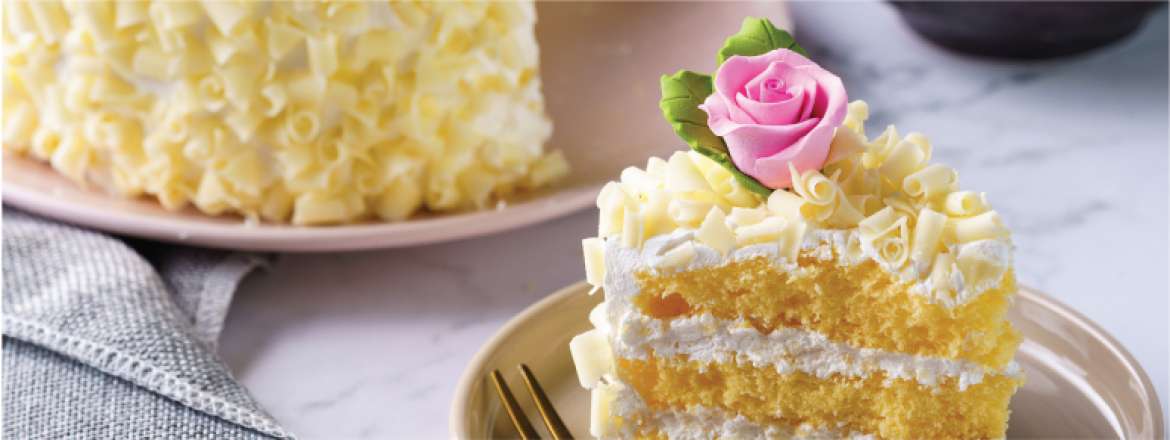Whether it’s a celebration or just the occasional sweet tooth, cakes and cupcakes are the go-to desserts for a simple reason: they are simply phenomenal. However, not all cakes are made the same, and one of their main differences lies in the cake’s frosting.
Cake frostings come in many different textures, colours, and flavours. With the myriad of choices we’re presented with, it might be hard to decide which frosting suits your cake. As a starting point, we’ve selected 6 different frostings commonly seen on cakes, whether they’re displayed in the glass fridges of bakeries or when you order cakes online.
1. Buttercream
If you’ve eaten cake during celebrations, chances are, you also have had it with buttercream frosting. Buttercream frosting is usually one that most cake makers use due to its simplicity. All you need is two simple ingredients; a type of fat (typically butter) and sugar. Believe it or not, just whipping these two ingredients can produce a classic, multipurpose frosting.
As buttercream is much softer and easier to work with, it’s usually the first frosting that most beginner bakers work with. The quality of the fat will affect its taste. Some bakers may also add eggs into the mixture to give it an added airy consistency.
There are five main subtypes of buttercream: simple buttercream, decorator’s buttercream, meringue buttercream, French buttercream, and pastry-cream buttercream. Each of which is used for different textures and decorations. To spice things up, you can add food colouring or other flavourings. The versatility of buttercream is most likely what makes it a classic frosting used on cakes.
2. Royal Icing
When we think of royal icing, the frosting that comes to mind would probably be smooth and polished. As a smooth white paste, royal icing is commonly used to decorate denser cakes as it’s as close to polished as possible.
Not known to many, royal icing starts as a fluid paste before solidifying into a more rigid layer. The base is a mixture of beaten egg whites, icing sugar and water. Some bakers may also choose to substitute water with lime juice. Experienced bakers may also prefer to use meringue powder over raw egg whites. Royal icing is generally white but allows for the addition of edible food colourings.
3. Whipped Cream
We’ve all had whipped cream on our sundaes and coffee, but whipped cream frosting for cakes could be made differently. Also known as Chantilly cream, whipped cream frosting is made using heavy cream and sugar, beaten until it becomes fluffy. You could also add cornstarch or meringue powder for added stability. However, if you’re attempting to make your own whipped cream, do note that overbeating the mixture could cause it to become grainy. The best advice is to beat it until firm peaks form in the cream. It’s also recommended to refrigerate your whipped cream to retain its texture.
4. Cooked
Yes, you heard it right, this type of frosting is called cooked frosting mainly because the mixture of egg whites, sugar and corn syrup are beaten while boiling. A prime example of this is the seven-minute frosting. As its name suggests, after beating the mixture for seven minutes over a stove, take it off the heat and beat in any remaining ingredients. The most classic ingredient would probably be a splash of vanilla.
Since beating the mixture might be a little inconvenient, it’s recommended to use a hand mixer if you want to try this form of frosting for your cake. However, if you’re just having the cake as a dessert, do take note that cooked frosting has a limited lifespan and is best eaten within a few hours of being made. It also tends to be absorbed into cakes, so it’s best to consume it all to enjoy its best texture.
5. Glaze
Most of us know a glaze to be the frosting that gives the shiniest finish, whether it’s on cookies or cakes. If done right, a glaze will cover the cake clean, giving the whole cake a satisfying glassy coat.
Glazes may seem fancy, but they are pretty simple to make. All you need is icing sugar and a liquid, usually water. Once combined, you could choose to pour the mixture over your cake or spoon some wherever you want. Just make sure it gives a smooth finish.
6. Ganache
Compared to other kinds of frostings, ganache typically has a much thicker consistency. A ganache can be easily used as a glaze due to its shiny finish when you pour it over the cake.
The standard ganache would be the chocolate ganache, made using melted chocolate and heavy cream. You could adjust the ratio of chocolate to heavy cream to get your desired consistency. Using high-quality chocolate would give the ganache a flavour worth licking it clean off the spoon. As a bonus, you could even make truffles with your leftover ganache! After chilling the mixture, beat it again to get a fluffy but firmer consistency before shaping it and popping them into the fridge.
Cakes are, without a doubt, one of the most timeless, delectable treats that can satisfy your dessert cravings in a snap. Pairing them with the right frosting enhances their taste and improves the texture of each bite overall.
Although making a cake for your loved ones is one of the best ways to show how much you care for them, if you find yourself unable to, getting one from a well-established bakery isn’t a bad plan B.
As a household name in Singapore, at Polar Puffs & Cakes, we take pride in delivering you a wide variety of freshly baked cakes since 1926. Whether you’re looking to order a birthday cake online or just a treat for any occasion, we’re sure to have you covered! If you find yourself stuck in cake planning, check out our catalogue and we’re sure you’ll find something fitting for the occasion.



